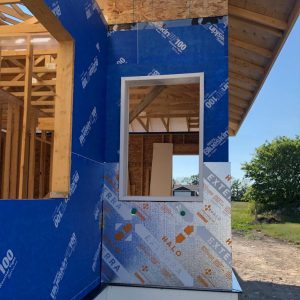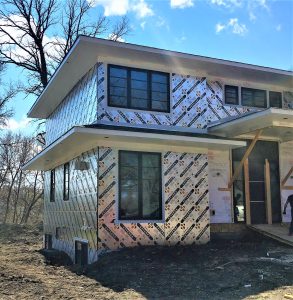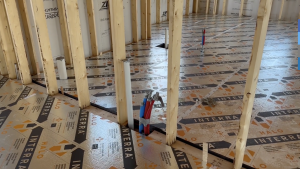
Does Halo Subterra Protect Against Carpenter Ants?
Yes, Halo’s Subterra insulation can protect against carpenter ants — as long as you install it correctly.
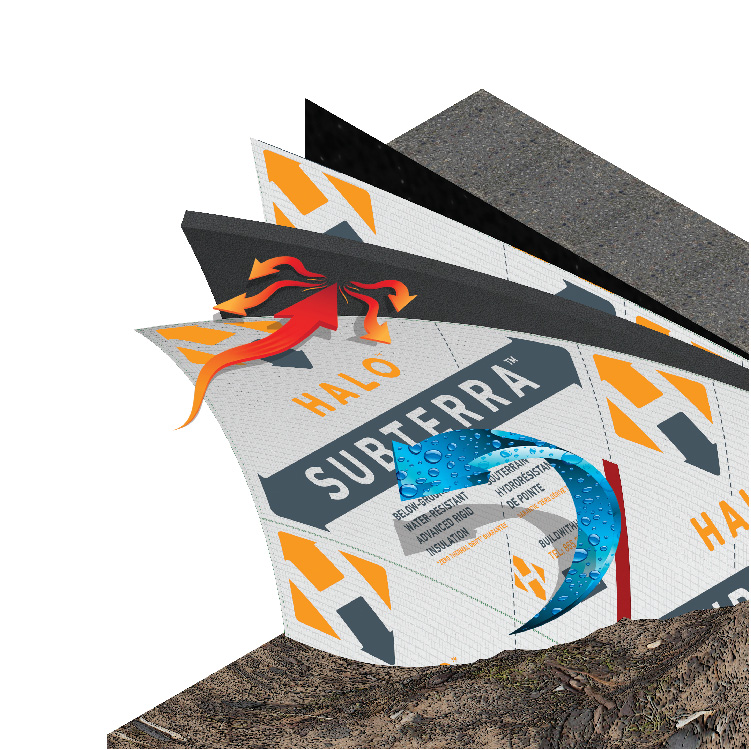
Installing Subterra at the Foundation’s Exterior
Here are the 3 simple steps you’ll need to follow while installing Subterra to deter carpenter ants, termites, and other insects from making their way into a home.
1. Tape and Seal All Joints
Once the Subterra boards are in place, you’ll need to tape and seal all the joints between them. Subterra’s laminate, along with the tape, will keep the insects from burrowing through the boards’ foam cores.
2. Install the Termite Shield
To protect Subterra’s exposed upper edge, you should also install a suitable termite shield. This shield should be installed beneath the sill plate, covering the entire top of the foundation wall, Subterra board, and overlapping the parging coat.
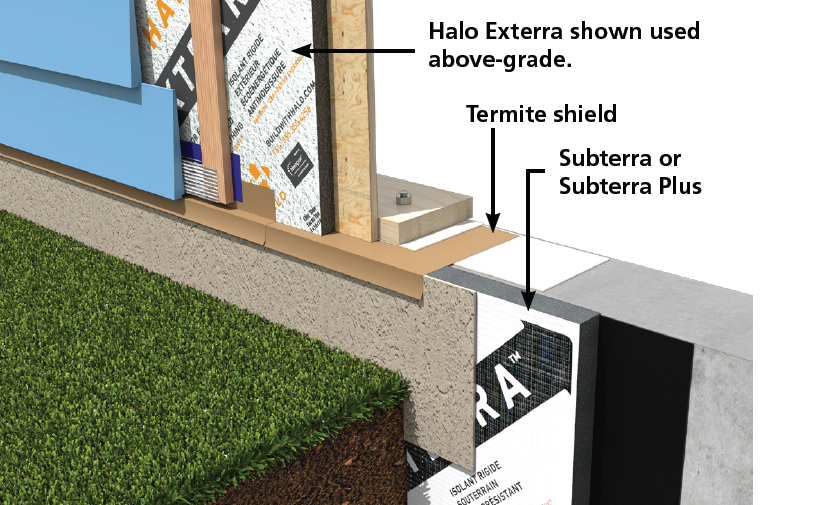
3. Tuck the Bug Screen Under the Strapping
By making the strapping U-shaped — as it appears in the illustration above — you’re protecting the Exterra board from burrowing insects, too. Simply tuck the bug screen under the strapping and staple it in place.
Additional Tips for Heavy Infestation Areas
If you’re building in a heavily infested area — and we’re talking about carpenter ants, termites, and other insects — you’ll want to take some additional precautions to protect your buildings from infestations. Here are a few tips:
1. Keep All Cellulose Materials From Contact With the Exterior
Termites eat wood, whereas carpenter ants only burrow through it to make their nests. However, whether your area suffers from termite or carpenter ant infestation, it’s best to keep cellulose material, such as wood, away from the building’s exterior. This simple step should protect the home from carpenter ants and termites alike.
2. Treat the Ground
In heavily-infested regions, the building code will likely compel you to apply a termite pretreatment when you’re building the home. A pretreatment is an insecticide that helps keep termites and carpenter ants at bay.
3. Install Inspection Strips
Inspection strips allow you to visually inspect the home’s sill plate and rim joist for signs of termites or carpenter ants. This way, you can catch an infestation and call in pest control before excessive damage occurs.

Don't miss a thing!
Subscribe for exclusive content, insider industry news and limited edition webcasts.

